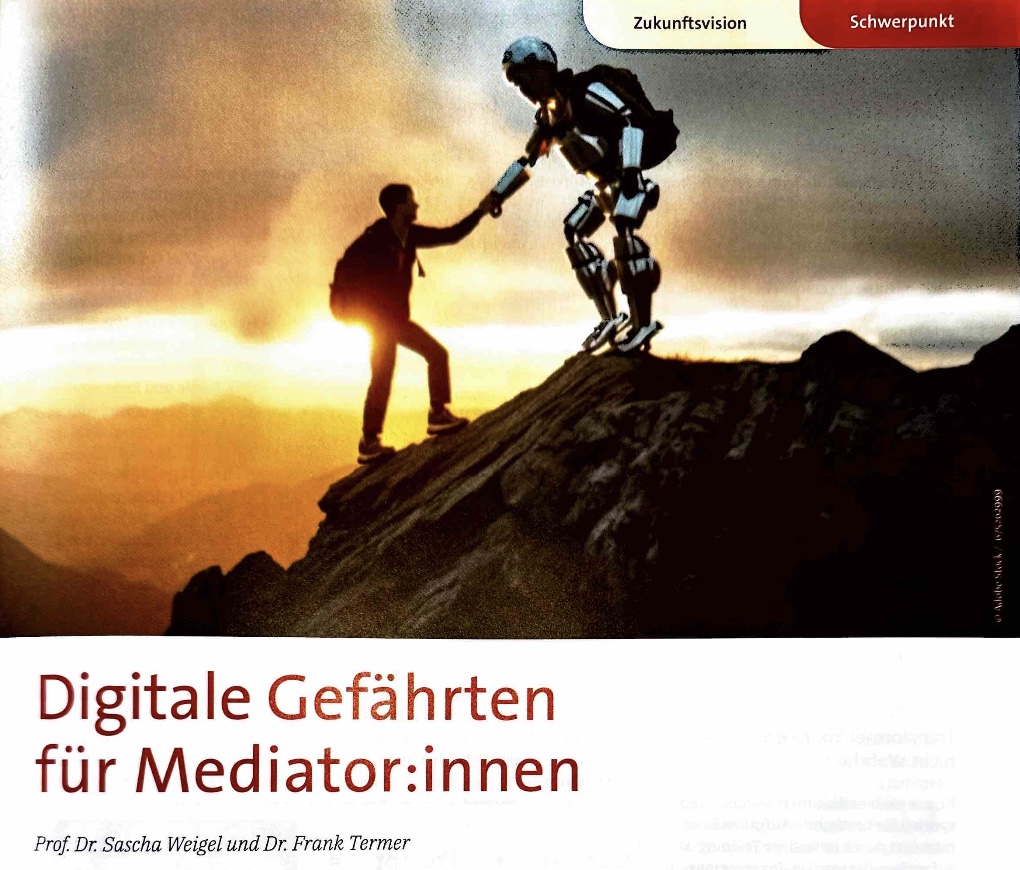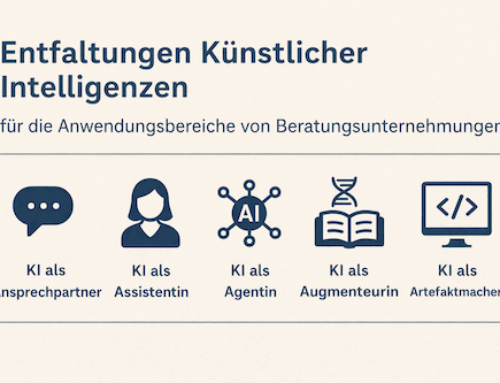Essay: Digital companions for mediators.
in: Spektrum der Mediation 95/2024, p. 15-19
Dr Sascha Weigel & Frank Termer
Summary
Dealing with artificial intelligence (AI) is like riding a bike: Few can explain in detail exactly how it works – especially keeping your balance! But after some initial challenges, you progress with joy, vigour and enthusiasm. At the same time, it also requires mindfulness so as not to harm yourself, others and the basic rules of coexistence. What does practice with digital companions look like for mediators?
Extracts
Historical categorisation
The idea of assistive AI is not new, but dates back to the 1950s. Developed in academia, it was based on advances in mathematics, computer science and, in particular, computational linguistics, which focussed on facilitating the processing of data, increasing its speed and increasing the depth of the insights gained from it. Historically, AI has gone through various phases. These have alternated between periods of high public interest and high financial commitment to AI research and phases in which interest was rather restrained and little progress was made - the so-called AI winter. In recent decades, however, there have been significant developments…
Transformers can speak language, not truth
Cls, such as those discussed here, are specially designed for specific tasks and have been prepared for them through intensive training. Their common feature is their ability to recognise patterns in large amounts of data and use them to develop models of the multilingual world that we humans can use. It should be emphasised that these patterns are based on language – or in the case of images – on pixels, regardless of whether they reflect the "truth" that can be expressed in language, but does not have to…
Prompt Engineering
Interaction with AI applications takes place through prompt engineering. So-called prompts as inputs lead to machine-generated outputs. The more precise the input, the better the response. But the same applies here: Garbage in, garbage out - the quality of the output depends on the quality of the input. In contrast to googling, where it is more important to (only) enter the keywords, with prompting it is more important to explain the context of the question in detail.
A good prompt includes: Text type, length, topic, audience, target and prompt modifiers…


Specific areas of application in the context of mediation
In order to structure and illustrate the possibilities and opportunities of AI applications for mediators, specific applications are explained and exemplified below.
1. translation of texts…
2. customer contact, feedback and criticism…
3. data and information management…
4. analyse texts, tables, images etc.…
5. writing texts…
6. appointment organisation…
7. professional development (e.g. through PDF extracts)…
8. create marketing and digital content…
9. sparring partner…
10. plan trainings, meetings and workshops…
11. documentation and summary…
12. reflecting on and supervising mediation and coaching work…






Leave A Comment